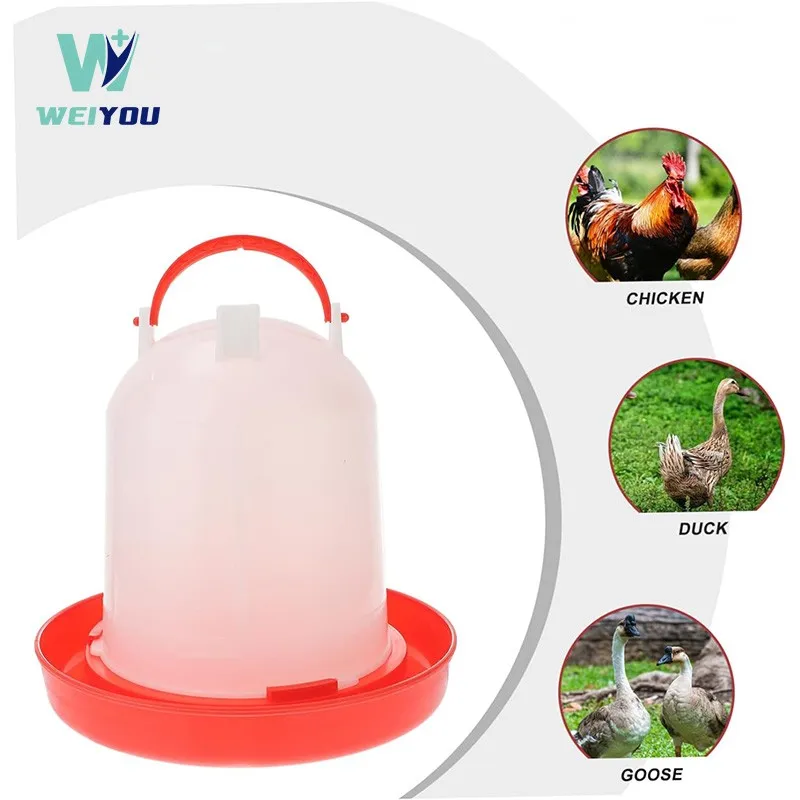- English
- Español
- Português
- русский
- Français
- 日本語
- Deutsch
- tiếng Việt
- Italiano
- Nederlands
- ภาษาไทย
- Polski
- 한국어
- Svenska
- magyar
- Malay
- বাংলা ভাষার
- Dansk
- Suomi
- हिन्दी
- Pilipino
- Türkçe
- Gaeilge
- العربية
- Indonesia
- Norsk
- تمل
- český
- ελληνικά
- український
- Javanese
- فارسی
- தமிழ்
- తెలుగు
- नेपाली
- Burmese
- български
- ລາວ
- Latine
- Қазақша
- Euskal
- Azərbaycan
- Slovenský jazyk
- Македонски
- Lietuvos
- Eesti Keel
- Română
- Slovenski
- मराठी
- Srpski језик
What are the best poultry drinker brands
2024-09-25

What are the different types of poultry drinkers available in the market?
There are several types of poultry drinkers available in the market, including: ● Bucket Drinkers ● Bell Drinkers ● Nipple Drinkers ● Automated Watering Systems ● Cup Drinkers Each type of drinker comes with its own set of advantages and disadvantages, and choosing the right one largely depends on the specific requirements of the user.What factors should be considered while choosing a poultry drinker?
Some of the essential factors that should be considered while choosing a poultry drinker are: ● Material – quality, durability, and resistance to bacteria ● Water Flow Rate – determining the number of birds to be served per drinker ● Bird Age and Size – taking into account the average size and age of the birds ● Cleaning Ease – ensuring easy accessibility and simpler cleaning processes to maintain hygiene standards ● Adequate Water Supply – making sure that enough water is provided to the birdsHow to maintain poultry drinkers?
Maintaining poultry drinkers is crucial to support the health of birds. The following are the necessary steps for proper maintenance: ● Regular cleaning of Drinkers and Water Supply ● Cleaning and Disinfecting Drinkers Regularly ● Replacing Worn-Out Drinkers Parts ● Checking the Water Flow Rate and Adjusting It as Per RequirementWhat are the benefits of nipple drinkers?
One of the significant advantages of nipple drinkers is the prevention of water wastage and poor hygiene. The birds learn to drink from the nipple, which reduces the water spillage and contamination. These drinkers also reduce the potential for wet litter that can cause health issues for poultry birds. In conclusion, providing access to clean water sources for poultry birds is essential to their growth and overall health. Choosing the right kind of poultry drinker depends on specific requirements, and maintenance is key to prolonging their lifespan.Ningbo Weiyou Import & Export Co., Ltd. is a reliable supplier of high-quality poultry drinkers, committed to providing hygienic and efficient drinking systems. Our range of products includes bucket drinkers, bell drinkers, nipple drinkers, and automated watering systems. Our company's website is www.nbweiyou.com, and for inquiries, please feel free to email us at dario@nbweiyou.com.
References
Crawshaw, R. (2001). Poultry Drinking Systems. Nelson Thornes.
Almazán-Jiménez, M. A., González-Barrera, J. E., Estrada-Angulo, A., & Ramírez-Necoechea, R. (2019). Analysis of the flow rate in drinkers with multiple nipples used in broiler production. Journal of Applied Poultry Research, 28(3), 966–971.
Pessotti, R. (2011). Poultry Watering Systems: A Beginners Guide. Lulu.
Roberts, J. R. (2004). Poultry Behaviour and Welfare. CABI Pub.
Curtis, P. A. (1996). Poultry Production: A Guide to Commercial Poultry Production. Cengage Learning.
Corner, A. H., & Harvey, W. R. (2007). O’Brien’s Encyclopedia of Practical Husbandry and Rural Affairs. Read Books Ltd.
Elawad, S. A., Kamboh, A. A., Salih, A. M., & Kamal, G. A. M. (2013). Application of the nipple drinker system for broiler chickens in hot regions – Sudan. Livestock Research for Rural Development, 25(7).
Hopkins, B. (1997). Ventilation systems for livestock housing. Nottingham University Press.
Damerow, G. (2017). Storey’s Guide to Raising Chickens, 4th Edition. Storey Publishing.
Braastad, B. O., & Sandøe, P. (2010). Animal Welfare in Organic Farming. CABI Pub.
Barnes, P. (2015). A Beginner’s Guide to Poultry Farming. Lulu.



